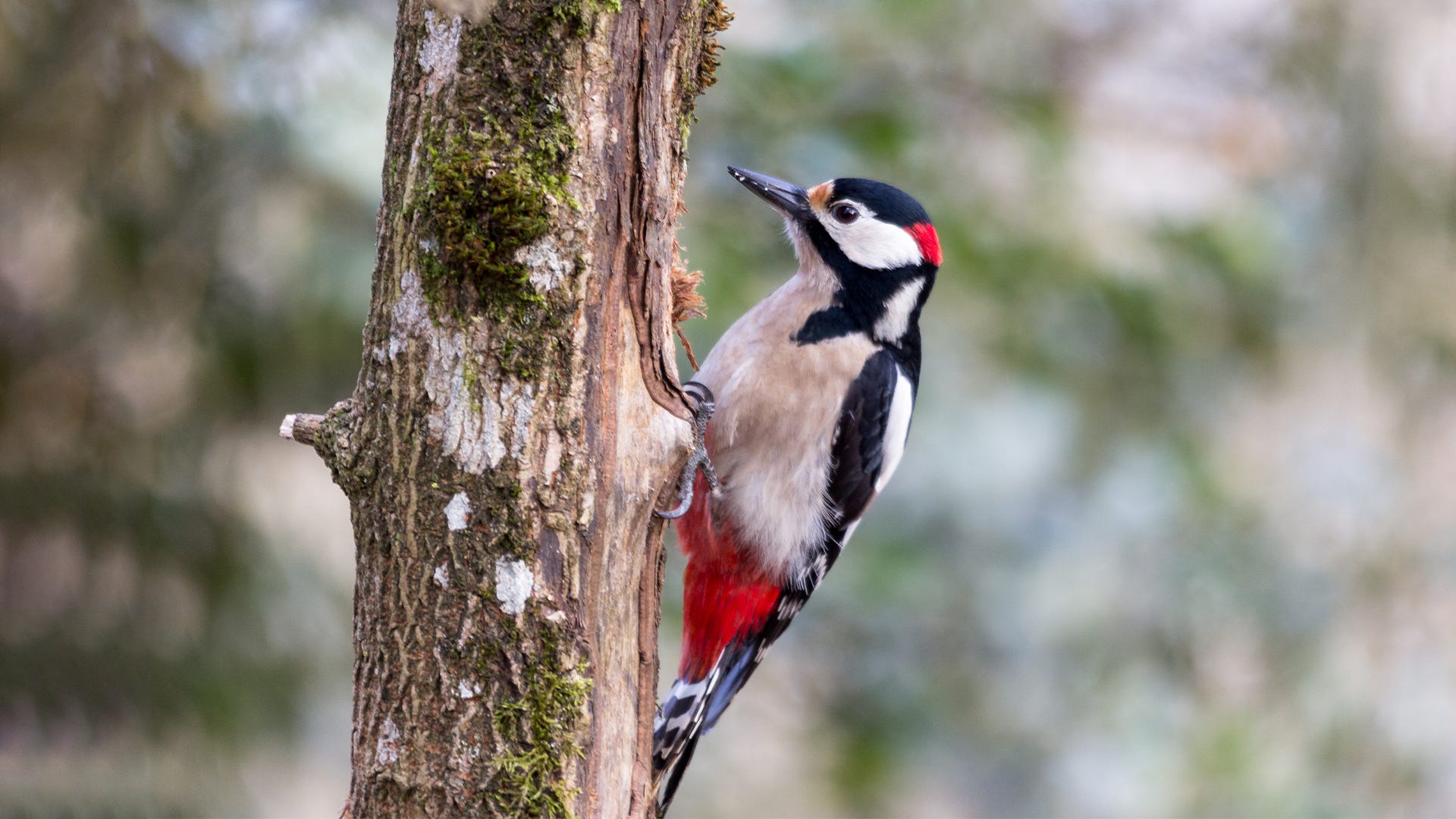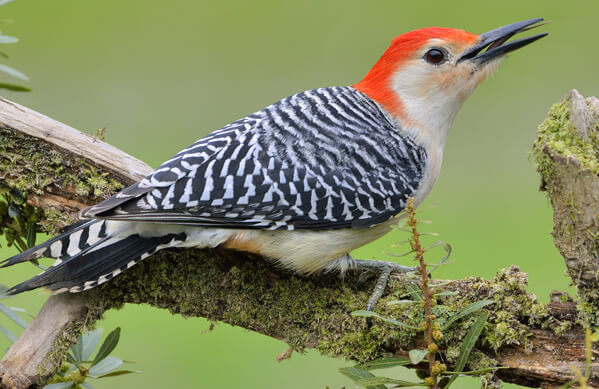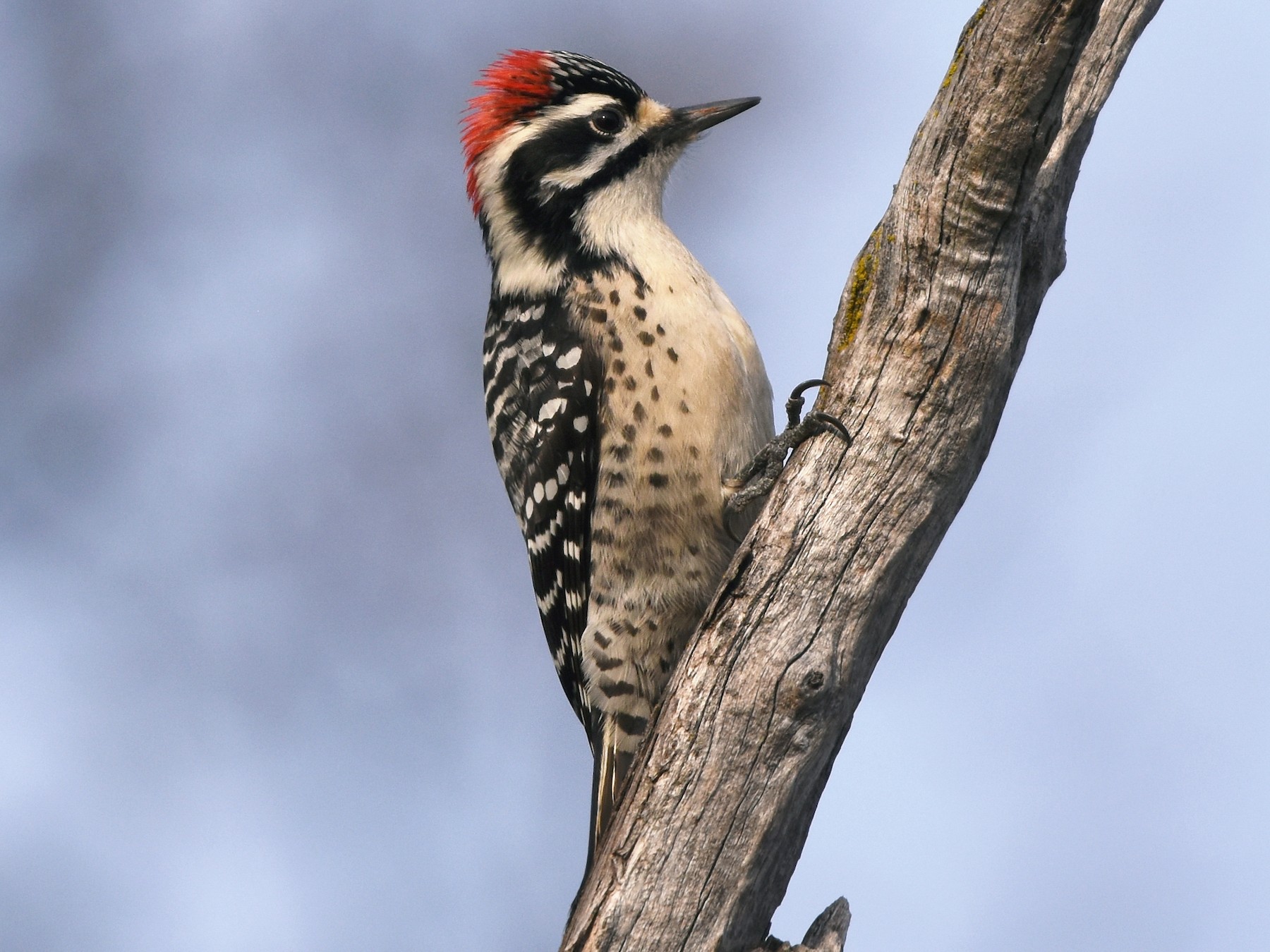Checking Out Woodpeckers in Florida Habitats: Where to Spot These Birds
Checking Out Woodpeckers in Florida Habitats: Where to Spot These Birds
Blog Article
Woodpeckers Unleashed: Exploring the Wonders of These Skilled Tree Mountain Climbers
Woodpeckers, with their distinctive markings and rhythmic drumming echoing through wooded areas, hold a distinct area in the bird world - Woodpeckers in Florida. As we delve right into the intricate details of woodpeckers' nesting behaviors, feeding techniques, and the continuous conservation initiatives to safeguard these remarkable birds, a much deeper recognition for their location in nature unfolds.
Anatomy and Adaptations
When checking out the composition and adjustments of woodpeckers, one can observe remarkable features that allow these birds to flourish in their specialized environmental specific niche. Additionally, woodpeckers have zygodactyl feet, with 2 toes dealing with ahead and two dealing with backwards, supplying a company grasp on tree trunks while they search for food or drum for communication.
In addition, woodpeckers have a special tongue structure that is long, barbed, and sticky, enabling them to remove pests from holes in timber. This specific adaptation permits woodpeckers to manipulate a food source that is inaccessible to many other bird types. In general, the anatomy and adjustments of woodpeckers display the impressive evolutionary services that have enabled these birds to grow in their arboreal habitat.
Drumming Behavior
Having explored the composition and adjustments of woodpeckers, the emphasis currently changes to comprehending their drumming habits, a distinctive aspect of their communication and territorial display screens. Drumming is an essential kind of interaction among woodpeckers, serving several functions such as developing areas, attracting mates, and signaling alarm. Each woodpecker types has an one-of-a-kind drumming pattern that helps individuals acknowledge participants of their very own species and differentiate them from competitors or killers.
Woodpeckers create drumming audios by rapidly pecking on powerful surface areas such as dead trees, utility poles, or also steel objects, developing a series of rhythmic beats. The strength and rate of drumming can differ based upon the function; as an example, a quick drumming sequence might indicate aggressiveness in the direction of intruders, while a slower and softer drumming pattern can indicate courtship (Woodpeckers in Florida). Additionally, woodpeckers might adjust the regularity and period of their drumming to convey particular messages effectively
Nesting Habits
Exploring the nesting habits of woodpeckers reveals fascinating insights into their reproductive habits and environment selections. Woodpeckers are recognized for their one-of-a-kind nesting choices, usually digging deep into tooth cavities in trees to produce sheltered areas for raising their young. These cavities offer not just as a nesting website however also as a protected refuge from killers and harsh climate.
Woodpeckers display a high level of integrity to their nesting sites, usually going back to the very same place year after year. This habits highlights the relevance of suitable environment accessibility for their reproductive success. The choice of a nesting website is crucial for woodpeckers, with aspects such as tree types, height, and degeneration phase playing considerable functions in their decision-making procedure.
Interestingly, some woodpecker varieties are recognized to dig deep into numerous dental caries within their area, supplying themselves with different nesting options. look at more info This approach may function as a form of insurance policy versus prospective hazards or disruptions to their primary nesting website.

Feeding Strategies
One of the most distinct feeding behaviors of woodpeckers is drumming, which entails quick pecking on trees to reveal pests underneath the bark. Woodpeckers are likewise understood to excavate tooth cavities in trees to access surprise insect larvae or sap. Some types, like the acorn woodpecker, shop nuts in specially developed openings called granaries.
Preservation Initiatives
In the middle of the detailed feeding strategies showed by woodpeckers, the preservation initiatives targeted at securing these remarkable birds play an important duty in maintaining their habitats and populaces. Woodpeckers encounter numerous hazards to their survival, consisting of habitat loss due to deforestation, environment adjustment altering their communities, and collisions with manufactured structures such as buildings and vehicles - Woodpeckers in Florida. Guardians are proactively functioning to resolve these obstacles visit our website and make sure the long-lasting wellness of woodpecker species

Education and public awareness projects are additionally important parts of woodpecker preservation efforts. By raising awareness about the significance of these birds in maintaining healthy woodland ecological communities, guardians can gather assistance for environment preservation campaigns and advertise accountable land monitoring techniques. Via joint initiatives between researchers, policymakers, and my link neighborhood areas, we can interact to protect a future where woodpeckers prosper in their natural habitats.
Verdict

Report this page